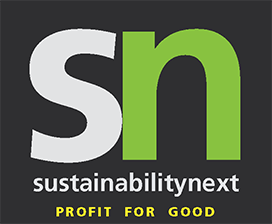Many Bollywood movies have made tons of money by ‘fighting’ problems of the poor in the slums. Heroes typically fight the mafia and the goons single handedly, to ensure justice. In contrast, a Hollywood action hero of the Bourne trilogy fame goes to the same slums in India, and without a fight, has so far enabled access to clean water to more than a quarter million poor families. The contrast can’t get any starker.
Matt Damon’s www.water.org is supporting his friend Gary White’s innovative project of providing micro-finance to the poor so that they are able to have access to clean municipal water network just like everyone else.
How does this work?
The poor in India have to wait in long queues for hours to collect a couple of pots of water every day. Gary found this to be a highly unproductive way of ensuring a basic necessity. Instead, the loss of productive time is used to earn and pay a part of it to buy the more reliable municipal water. Gary and Matt Damon were inspired by Bangladesh’s Mohammad Yunus about the power of microfinance to change the life of the poor. Matt Damon said in a recent interview to BBC how his NGO has so far (January 2014) given small loans to quarter million households – 94 percent of them to women.
The repayment percent is 99 percent. “Access to affordable capital is the biggest choke point for the poor,” he said. Contrast this to Indian banking system which doesn’t trust that the poor to pay back.
Covers 11 districts
Water.org’s program in India provides safe drinking water and sanitation facilities to the families living in rural and urban Indian communities in 11 states and one Union Territory (UT) – Andhra Pradesh, Karnataka, Madhya Pradesh, Maharashtra, Rajasthan, Bihar, Chhattisgarh, Orissa, West Bengal, Assam, Tamil Nadu and Pondicherry (UT). Water.org offers both grant and WaterCredit programs in India. The project’s website lists rural projects in districts of Tiruchirappali, Kanchipuram, Villupuram, and Thiruvallur in the southeastern state of Tamil Nadu; Bangalore Rural District, Belgaum, Tumkur and Mysore in Karnataka; parts of Nagpur District in Maharashtra; Jodhpur District in Rajasthan; Kathihar District in Bihar; Kurda, Ganjam and Puri Districts in Odisha, Darjeeling and Murshidabad Districts in the state of West Bengal; Sivasagar, Jorghat, Golaghat, Kamrup Distracts of Assam; and some regions of Pondicherry (UT), Madhya Pradesh and Chhattisgarh. Urban projects are located in the slums of Tiruchirappali, Bangalore, Hyderabad and Kolkata.
The rural communities have large populations of a 2,000 or more with houses built in tight clusters. The proximity of the dwellings in these villages makes the villages ideal candidates for tube wells capped with shared hand pumps.
India’s water and sanitation crisis
Although access to drinking water has improved, the World Bank estimates that 21% of communicable diseases in India are related to unsafe water. In India, diarrhea alone causes more than 1,600 deaths daily—the same as if eight 200-person jumbo-jets crashed to the ground each day. Hygiene practices also continue to be a problem in India. Latrine usage is extremely poor in rural areas of the country; only 14% of the rural population has access to a latrine. Can Indian banks and micro-finance companies wake up to make a difference in a big way? In any case, it’s not all charity; there is money to be made by serving the poor.








Well, these innovations will go a long way